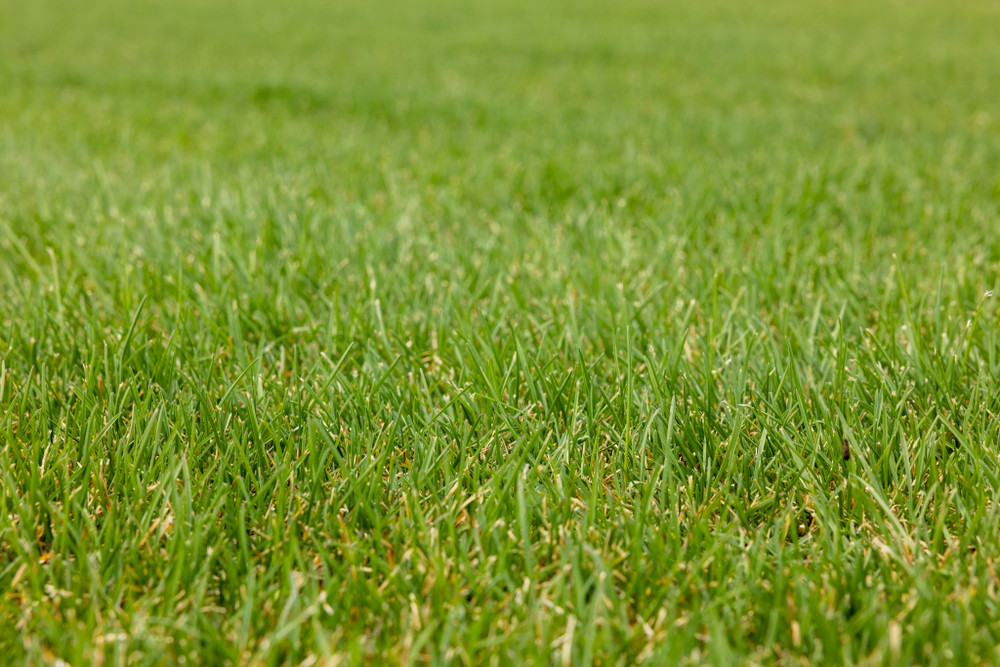Kentucky Bluegrass Sod: History, Benefits, and Care Tips for Homeowners
Posted by Farm2Yard on Aug 14th 2025
Kentucky Bluegrass Sod: History, Benefits, and Care Tips for Homeowners
Kentucky bluegrass (Poa pratensis) is one of the most popular cool-season lawn grasses in the United States. Known for its rich green color, soft feel underfoot, and ability to recover quickly from damage, Kentucky bluegrass sod is a top choice for homeowners who want a classic, high-quality lawn.
This guide covers the history of Kentucky bluegrass, its defining characteristics, the benefits for your yard, and proven tips for maintaining lush, healthy sod.
What Is Kentucky Bluegrass Sod?
Kentucky bluegrass sod is a fine-textured, dense turf that spreads by underground rhizomes. This growth habit gives it exceptional self-healing ability, allowing it to fill in bare patches naturally. Its signature emerald-green color often carries a subtle blue hue, especially when seed heads appear.
Kentucky bluegrass thrives in cool-season climates and prefers full sun, making it ideal for lawns in northern states and regions with mild summers.
History of Kentucky Bluegrass in the United States
Despite its name, Kentucky bluegrass is not native to Kentucky or even North America. The grass originated in Europe, northern Asia, and parts of North Africa. European settlers brought it to the United States in the 1600s, where it adapted well to the fertile soils of the central and northern states (USDA).
Its popularity in Kentucky’s horse country gave the region its “Bluegrass” nickname. The grass’s resilience and beauty also made it a favorite for lawns, parks, sports fields, and golf courses.
Key Characteristics of Kentucky Bluegrass Sod
-
Color & Texture – Deep green to blue-green with fine, soft blades.
-
Growth Habit – Spreads via rhizomes for quick repair and dense coverage.
-
Climate Preference – Grows best in 60–75°F soil temperatures; can go dormant in hot summer conditions.
-
Sun Requirements – Needs full sun for best performance; poor shade tolerance.
-
Root Depth – Moderate root system, shallower than tall fescue, making it more drought-sensitive.
-
Varieties – Over 200 cultivars available for traits like disease resistance, color intensity, and drought tolerance (NC State Extension).
Benefits of Kentucky Bluegrass for Your Yard
-
Premium Appearance – Offers a manicured, country club look with striking mow patterns.
-
Self-Repairing Turf – Rhizomes help fill in thin spots quickly.
-
Cold Tolerance – Remains green in cool weather and bounces back in spring after winter dormancy.
-
Soft & Comfortable – Ideal for families, pets, and barefoot play.
-
Widely Trusted – Used in professional baseball stadiums, golf courses, and upscale landscapes.
Challenges and Maintenance Considerations for Kentucky Bluegrass Sod
While Kentucky bluegrass sod offers many benefits, it does require attentive care:
-
Drought Sensitivity – Needs consistent irrigation in hot, dry periods.
-
Shade Limitations – Struggles in low-light conditions; best for full-sun yards.
-
High Maintenance – Requires regular fertilizing, mowing, and dethatching.
-
Pest & Disease Risks – Can be affected by thatch, billbugs, and fungal diseases (Penn State Extension).
Expert Take: Insights from USA Sod’s CEO, Jeff Hill
-
Kentucky bluegrass is a cold-weather sod - green and lush in cool seasons, though it may dorm in summer heat.
-
It's visually striking: dense, emerald-green with a blue tint, ideal in full sun.
-
The turf is durable and fast-recovering, used in many professional ballparks.
-
It prefers full sun and is less shade-tolerant and traffic-tolerant than tall fescue, which boasts deeper roots.
-
The blade texture is thicker than some other cool-season grasses.
-
Ideal customers are those in cool climates who have full-sun lawns and value beauty and cut patterns - just steer clear if your yard is heavily shaded
How to Install Kentucky Bluegrass Sod for a Healthy Lawn
-
Choose the Right Time – Early fall is ideal when soil is warm but air temperatures are cooler.
-
Prepare the Soil – Remove debris, till to loosen soil, and level the surface.
-
Lay the Sod Quickly – Prevents drying out and ensures even rooting.
-
Water Immediately – Saturate the sod and soil to promote root establishment.
Maintenance Tips for Kentucky Bluegrass Sod
|
Task |
Recommendation |
|
Mowing |
Keep at 2.5–3 inches in spring/fall, 3–3.5 inches in summer. Avoid cutting more than ⅓ of the blade at once. |
|
Watering |
1–2 inches per week; deep, infrequent watering is best to encourage root growth. |
|
Fertilizing |
Apply nitrogen-rich fertilizer in spring and fall; avoid heavy summer feeding. |
|
Aeration |
Aerate annually to improve water and nutrient penetration. |
|
Dethatching |
Remove excess thatch to prevent disease. |
|
Overseeding |
Overseed in fall to maintain density and repair wear areas. |
Is Kentucky Bluegrass Sod Right for Your Home?
Kentucky bluegrass sod is best for homeowners in cool-season climates who have full sun and want a lush, self-repairing, and visually stunning lawn. If you’re willing to commit to regular maintenance and seasonal care, Kentucky bluegrass can give you a premium yard that stands out in your neighborhood.
For expert installation and fresh-cut Kentucky bluegrass sod delivery, contact USA Sod - we’ll help you create the lawn of your dreams.

